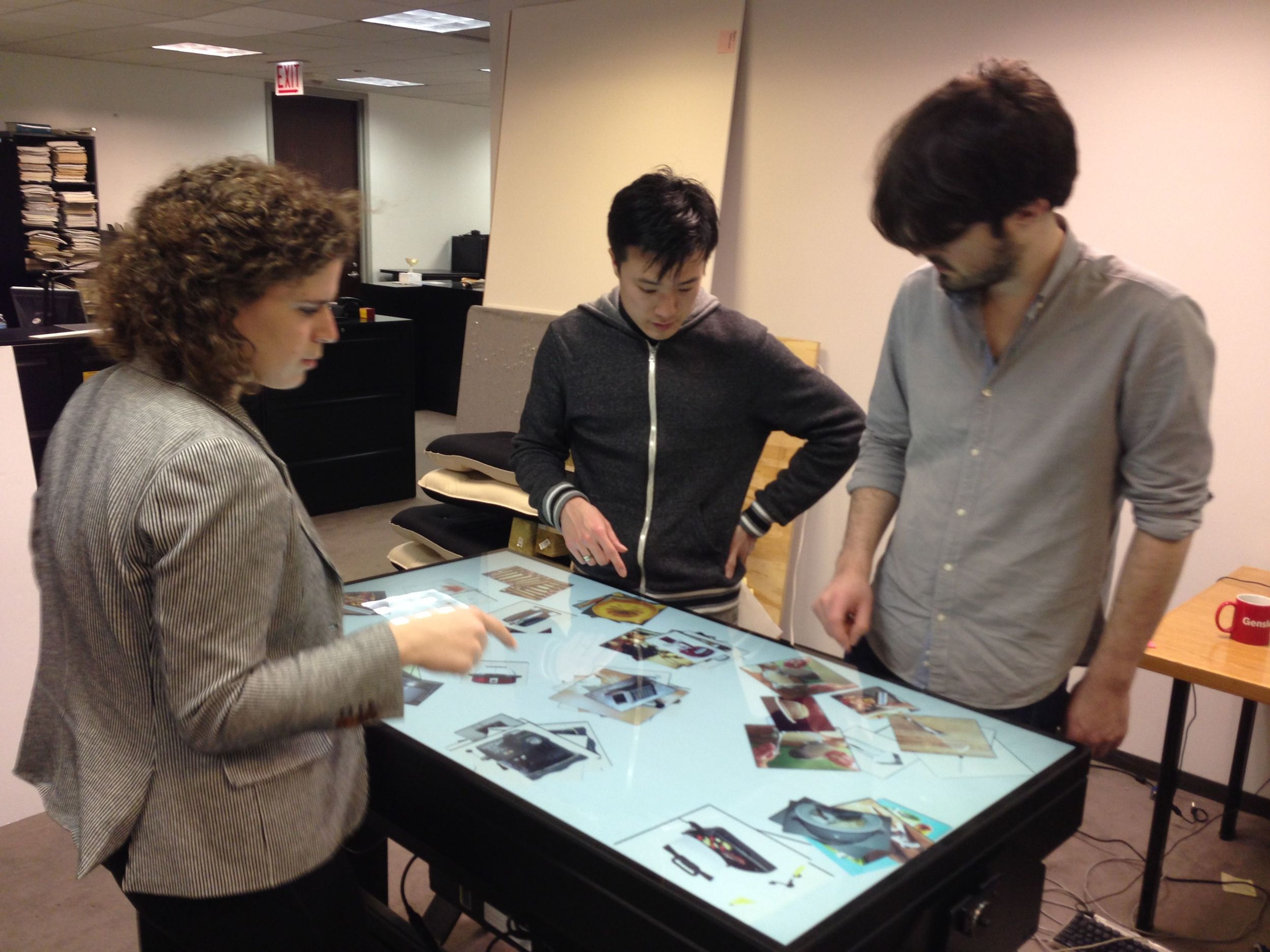Digital Project Spaces
Project background
Designers love analog tools like post-its, sharpies and whiteboards for collaborative work and creating immersive work environments around them. However, while they prefer these environments, designers are being forced to spend increasing amounts of time transposing work created in the physical environment into the digital realm and vice versa.
With my colleagues Laura Mattis, Jaime Rivera, and Yassine Abouhazim, we developed an interactive concept that helps highly collaborative teams create, where-ever they are.
Enabling technology: beyond tablets, phones + computers
Today's consumer devices are personal - designed for a single individual's viewing, working, and account preferences. To truly create a collaborative environment, our team chose to work with a tool that was designed for multiple users: a device enabled simultaneous user inputs, at a scale that all users could easily see.
User Research
The team used a combination of paper prototyping, expert interviews, Keynote-driven Wizard of Oz prototypes, and direct observation of interactive prototypes (pictured above) with user groups to drive concept direction.
Key Design Principles
- Use a 360 degree User Interface: Because team members stand around the table, the navigation system & interactions need to be legible and accessible no matter where any team member stands.
- Enable Space + Time Travel: Because the "work" was now in the digital realm, users could now remotely collaborate on a project (especially useful for consultants who are on multiple research teams) as well as catch up quickly if they were out of the office.
- Instigate Good Group Graces: Unlike personal devices, user errors made by participants were often blamed on other users, rather than the technology (Emotional outbursts were quite common). In addition, unlike the physical environment, this digital environment could provoke timid or quiet participants to speak up and say their thoughts.
Final Concept
coming soon!


